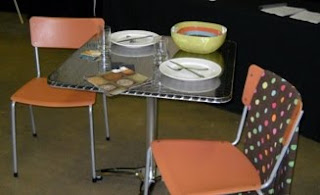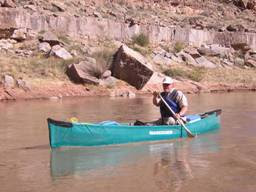Once you reach a certain position, and it doesn’t have to be very high, suddenly you are in enormous demand to go to meetings. As far as I can tell, the goal is to take anybody who achieves something worthwhile and immediately fill every minute of his or her day with meetings so that that person can no longer do anything useful.
Larry James, CEO/President of Central Dallas Ministries, is one of the worst afflicted people I know—his days are entirely filled with meetings. Now part of that is his fault. He is generous to a fault and will meet with just about anybody about just about anything, and he is so warm and generous that everyone wants to meet with him.
My wife, who is also warm and generous, has the same problem. Both Larry and my wife try to compensate for the time they lose in meetings by working longer and longer hours, but it’s a losing game. Meetings are infinite in number while there are only 24 hours in a day (except for the change from daylight savings to standard time when you get an extra hour).
Until recently I’ve managed to avoid the worst of the plague of meetings. I’m the highest executive officer of Central Dallas CDC, so I don’t really have a boss who can call meetings, and I don’t call any for my staff. After all, we all work in one big room and listen to everything anybody else says. Why would we need to meet and what would we need to talk about?
I’ve developed other protective practices. One is a highly cultivated reputation for disliking meetings. It discourages the timid. I avoid joining trade and professional organizations—most of them are too inclined to hold meetings. I keep a handwritten calendar. There’s no way to schedule me for a meeting without my knowledge.
But in spite of all these efforts (and some other, secret methods that I can’t reveal even to the readers of this blog), I’m losing the battle. I’m currently averaging almost five meetings per day. At an hour each, and if you allow half an hour between meetings for travel, that means I’m spending almost seven out of eight hours of each day doing meetings. By the time you’ve checked your email and voicemail, eight hours have passed and you haven’t got to your real work. Earlier this week someone suggested that I should hire an assistant, because it was getting too hard to schedule meetings with me—I had to resist telling them that was all to the good!
One of my heroes is Lieutenant General William Pagonis.

He was the director of logistics for the Gulf War, and was known for his efficiency. He was famous for removing all the chairs in the room, except his, before holding meetings. With everyone else standing up, the meetings were short and to the point. No time was wasted. Now that’s a real War Hero!
The problem with meetings isn’t that they’re useless. In fact they are necessary much of the time. The problem is that they crowd out all other work. You schedule meetings. You prepare for meetings. You travel to meetings. You attend meetings, and then you write minutes so you can remember what was said in the meeting. And the day is done and all you have done is meetings.
There is no time to think, study, write or research-let alone address any of the action items your meetings have undoubtedly produced. There is only time to talk. I think that’s why so many organizations and so many people do one piece of significant work and nothing else important—their life has been sucked away in meetings.
If we could just reduce the number of meetings then I’m convinced we could fix the economy, find a cure for cancer, eliminate poverty and finally invent the flying cars I’ve been waiting for all my life (ever since I saw them in an old issue of
Popular Mechanics). Right now, at this very instant, I’m sure some brilliant doctor is NOT inventing a cure for the swine flu because, instead, he is in a staff meeting.
I am convinced that when the sun is a burnt-out black cylinder and the human race has long vanished that only two things will survive: Meetings and cockroaches. It’s a chilling vision.



































